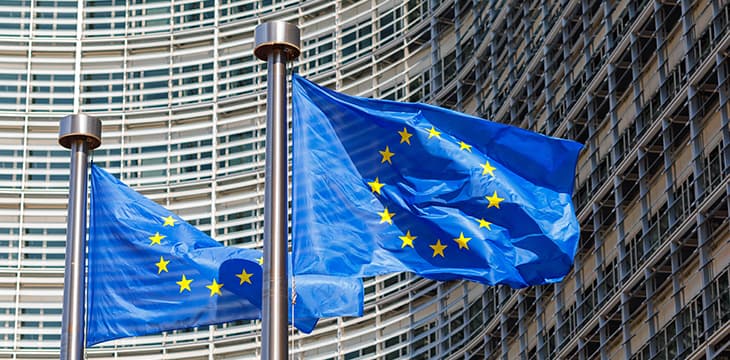|
Getting your Trinity Audio player ready...
|
The European Parliament and Council have finalized laws that will regulate a planned pilot project to test the use of blockchain technology for the tokenization of securities. The law is broad in scope, covering requirements for entities that can participate in the pilot scheme and how regulators are to oversee it.
The 33-page document published this month that contains the regulation called Regulation (EU) 2022/858 spelled out the objectives of the pilot project. This is essential to allow entities in the European Union to issue financial instruments such as stocks, bonds, money market securities, and funds using distributed ledger technology (DLT).
In the document, the EU highlighted that the law was made to curtail risks and harness the potential of tokenization of securities with DLT. Hence, the hallmark of the regulation will be to uphold fairness for the DLT industry.
“When applying this Regulation, the principles of technology neutrality, proportionality, the level playing field, and ‘same activity, same risks, same rules should be taken into account in order to ensure that market participants have the regulatory space to innovate…” the regulation stated.
Specific provisions of the regulation
The bill defines three major categories of market players, including DLT multilateral trading facility (DLT MTF), DLT settlement system (DLT SS), and DLT trading and settlement system (DLT TSS). The first category is for firms that admit to trading DLT financial instruments.
Platforms that settle transactions in DLT financial instruments against payment or delivery fall under the second category, while the third category is from firms that perform both functions. All these have specific requirements for their operation.
The regulation also introduces exemptions to allow for innovation, one of which is that regulated exchanges can deal with retail investors. The conditions state that exchanges must provide compensation in case of any mishap, and the investor must be well aware of the technology.
Similarly, a size limit has been placed on how much capital tokenized securities can hold during the pilot project. It stipulates an overall volume of $6.4 billion of securities issuance or a market cap of $9.6 billion for any DLT platform.
In addition, only entities that have a market cap of at least $534 million can issue DLT equities. A market cap of $1.07 billion is required to be able to issue bonds. Funds also need to have at least $534 million in assets under management to operate with DLT.
The regulation will go into force in March 2023 and the European Securities and Markets Authority (ESMA), the EU’s security watchdog, will be in charge of its enforcement. Back in January, ESMA called for public input on the bill.
The regulation is also separate from the EU’s Markets in Crypto Assets (MiCA) which mainly focuses on digital assets and stablecoins and has been in the works since 2020, according to Bloomberg. The controversial MiCA bill has also been making progress.
Watch: The BSV Global Blockchain Convention presentation, BSV On-chain Ecosystem Development in Europe
https://youtu.be/ggbZ8YedpBE?t=25004

 12-17-2025
12-17-2025 





